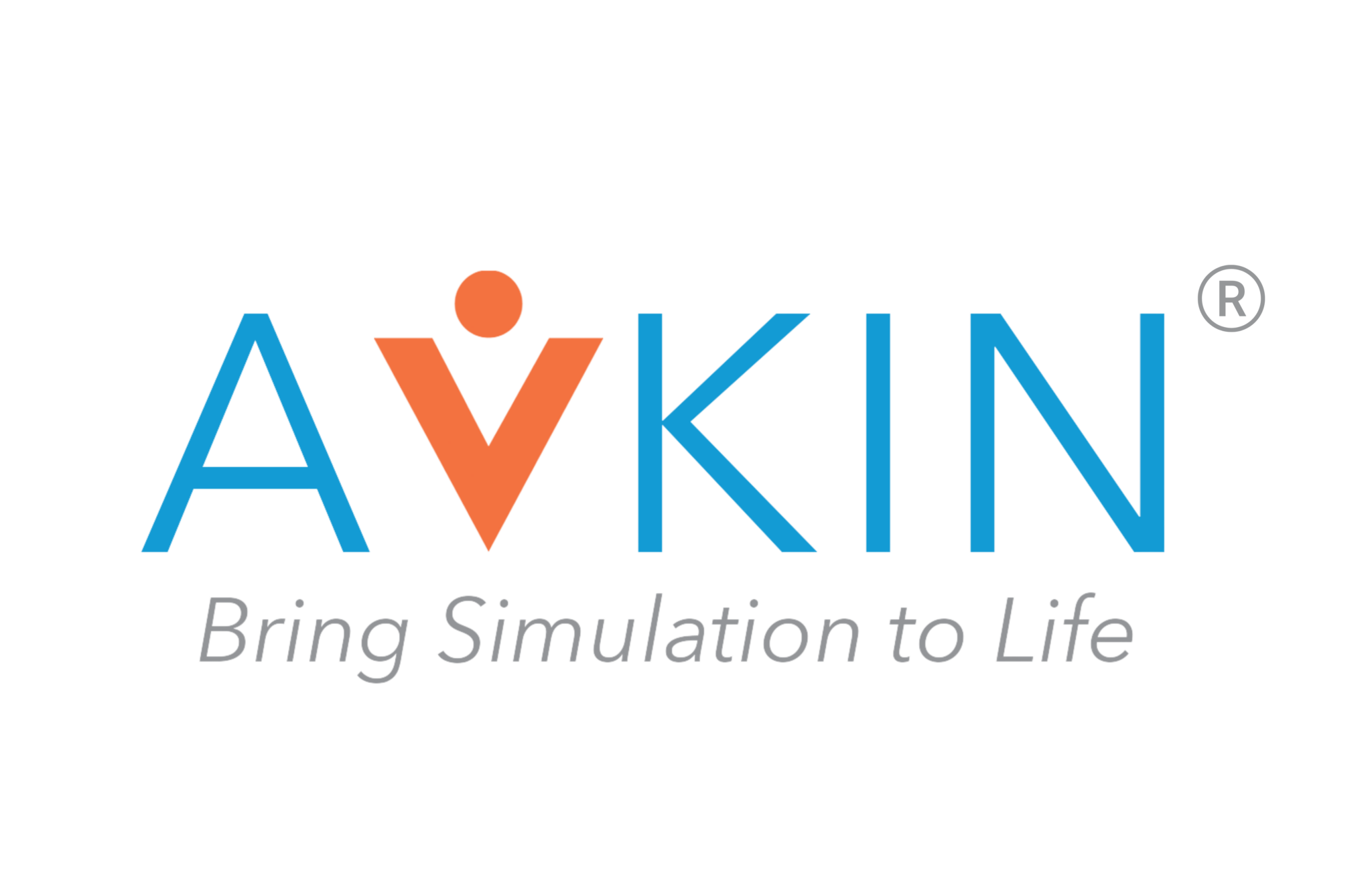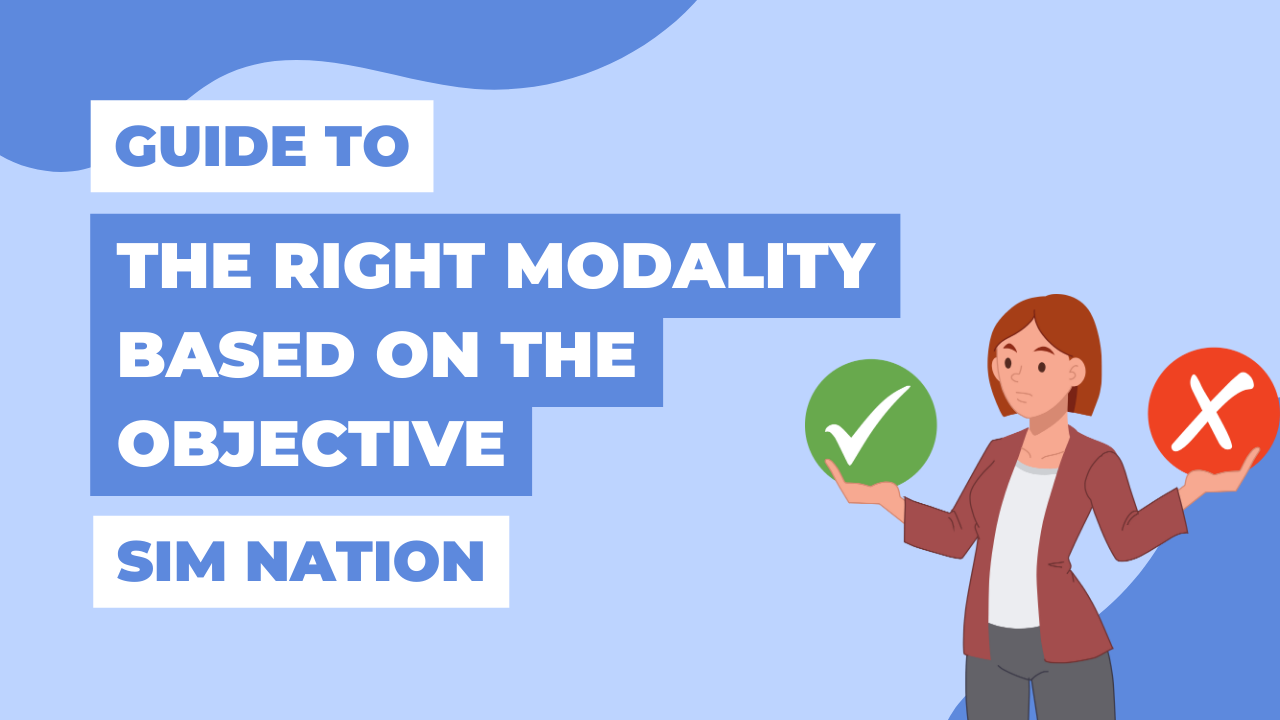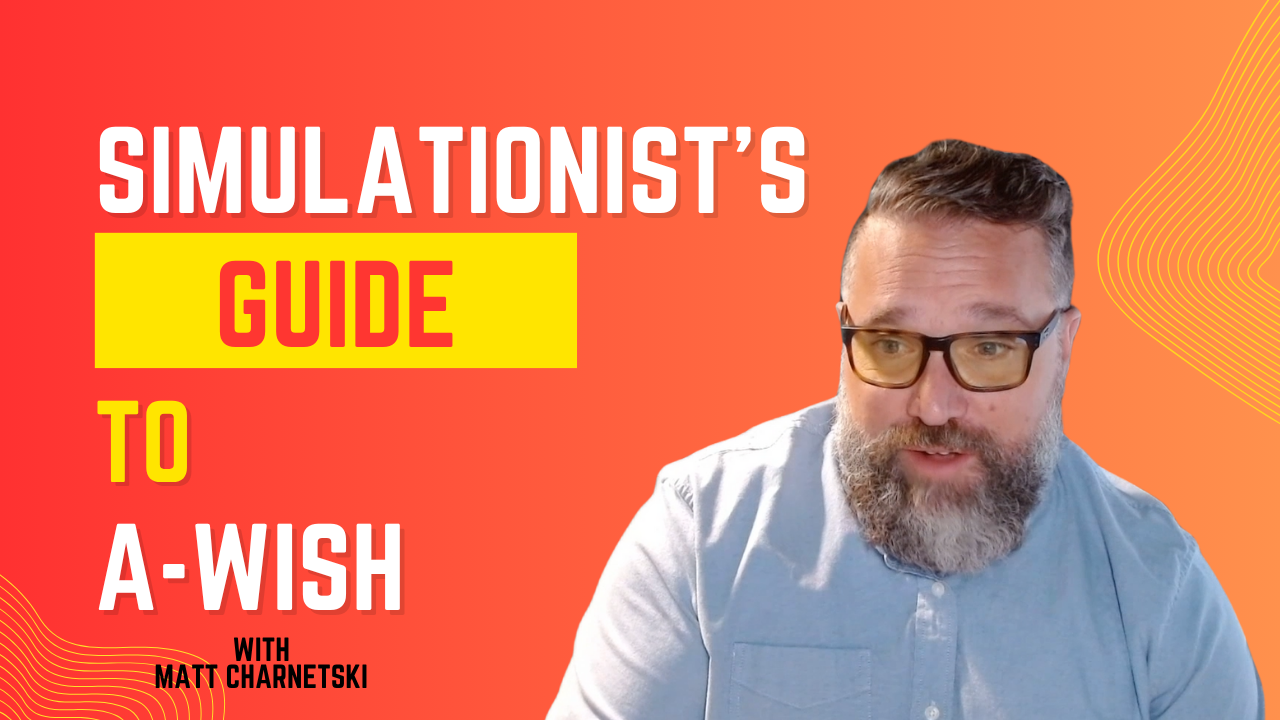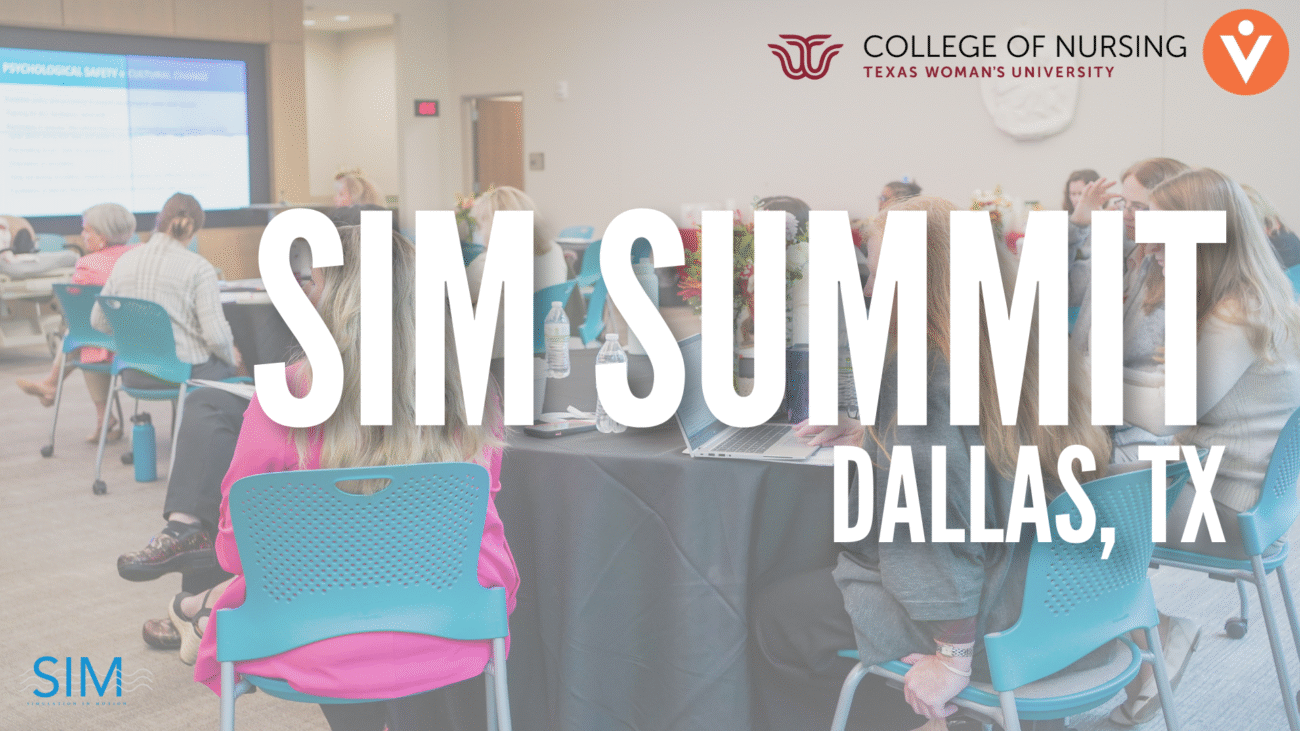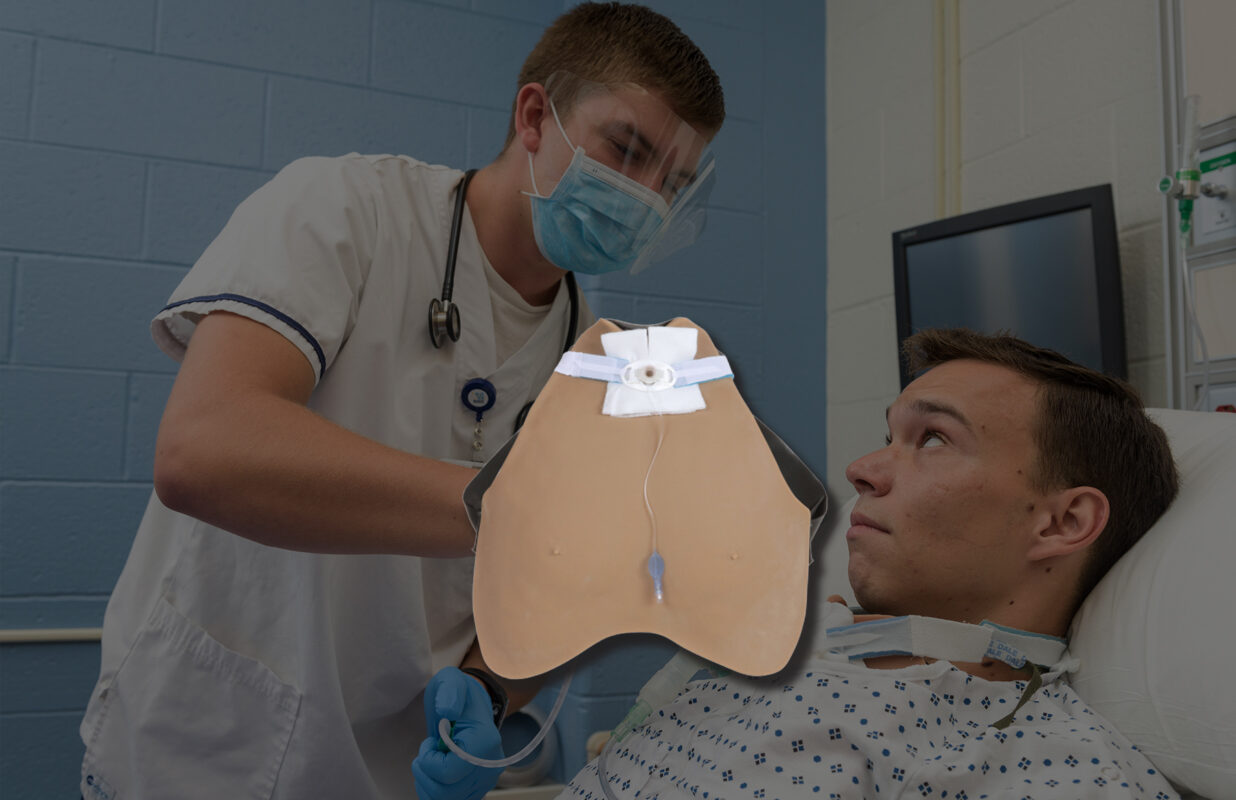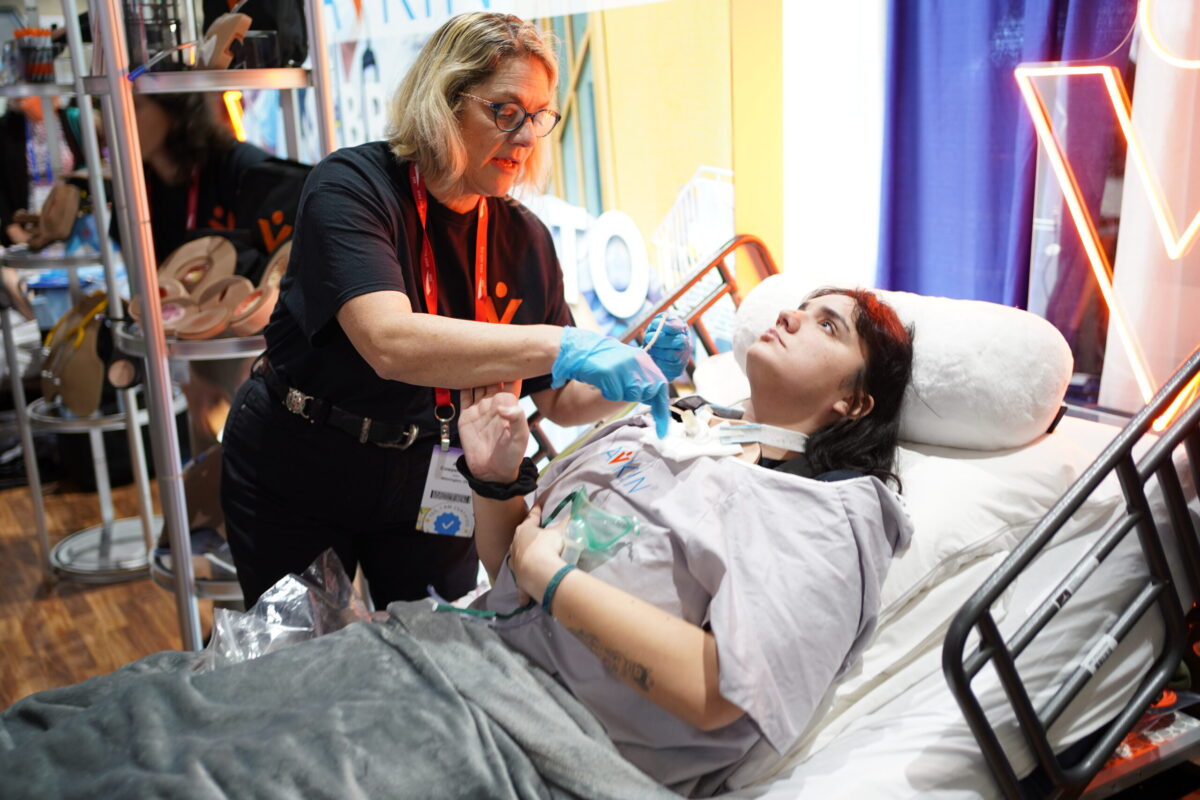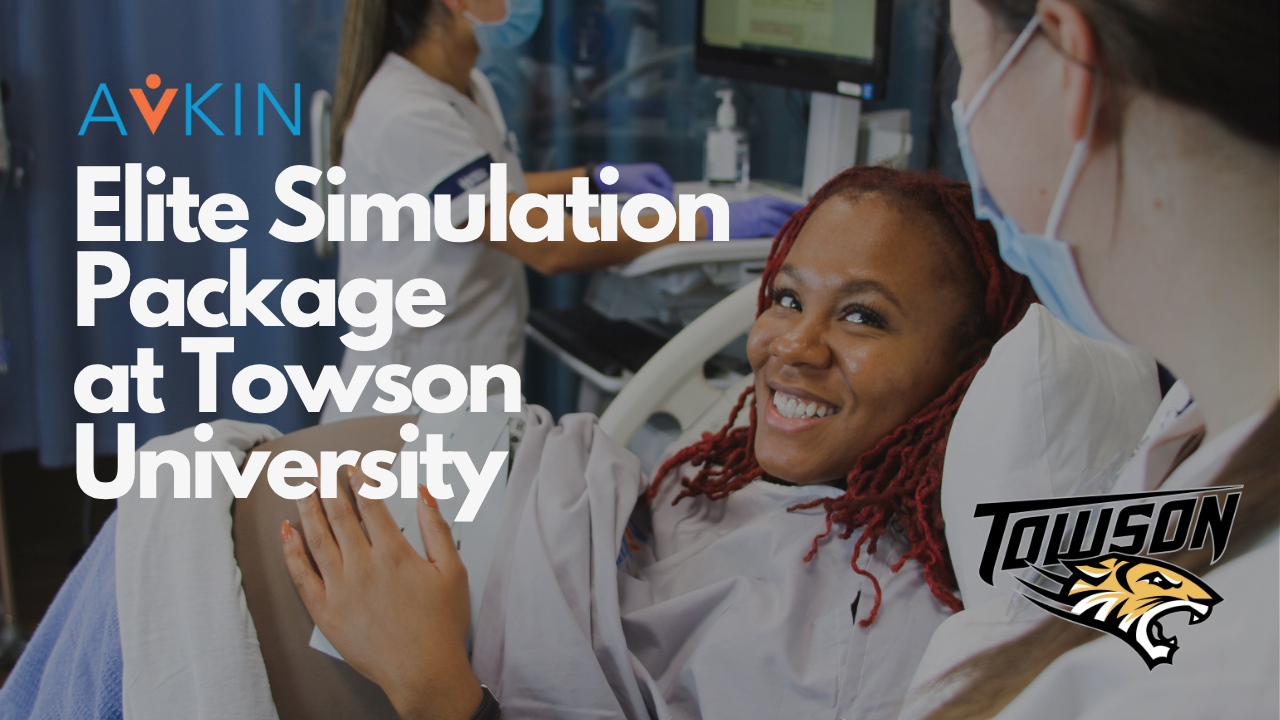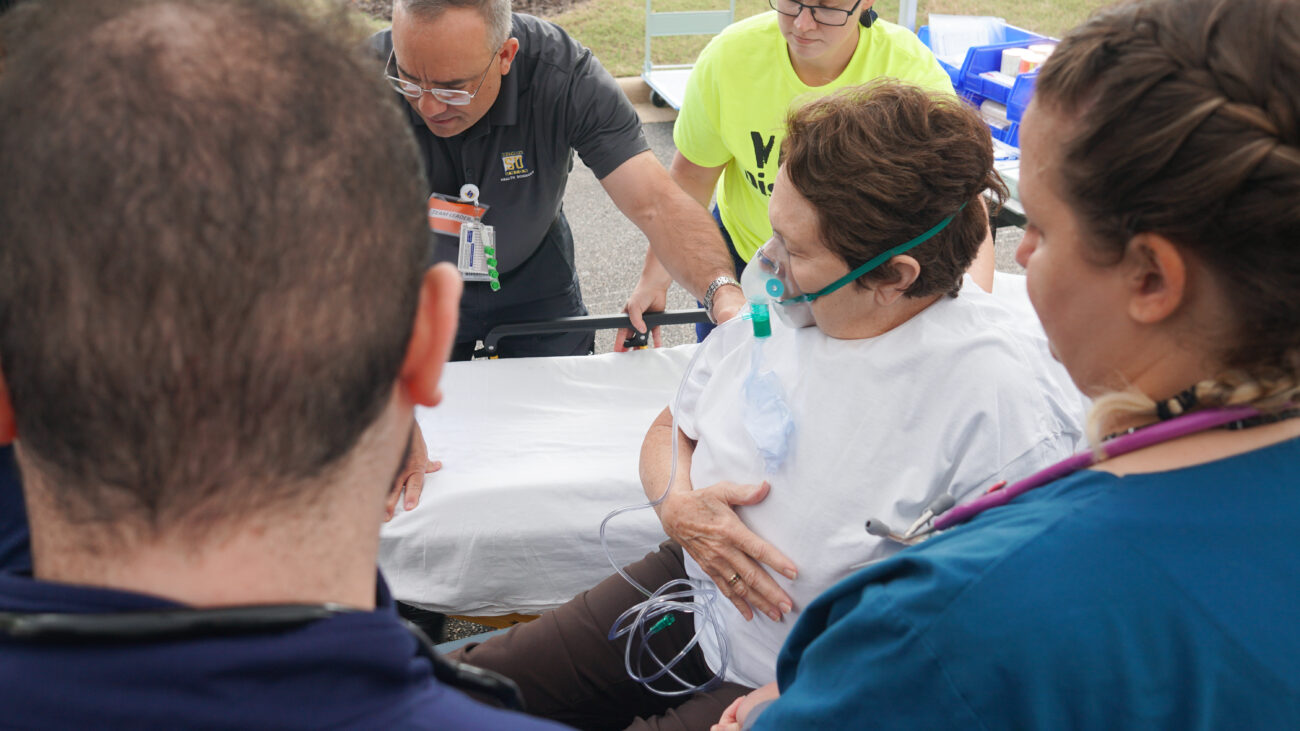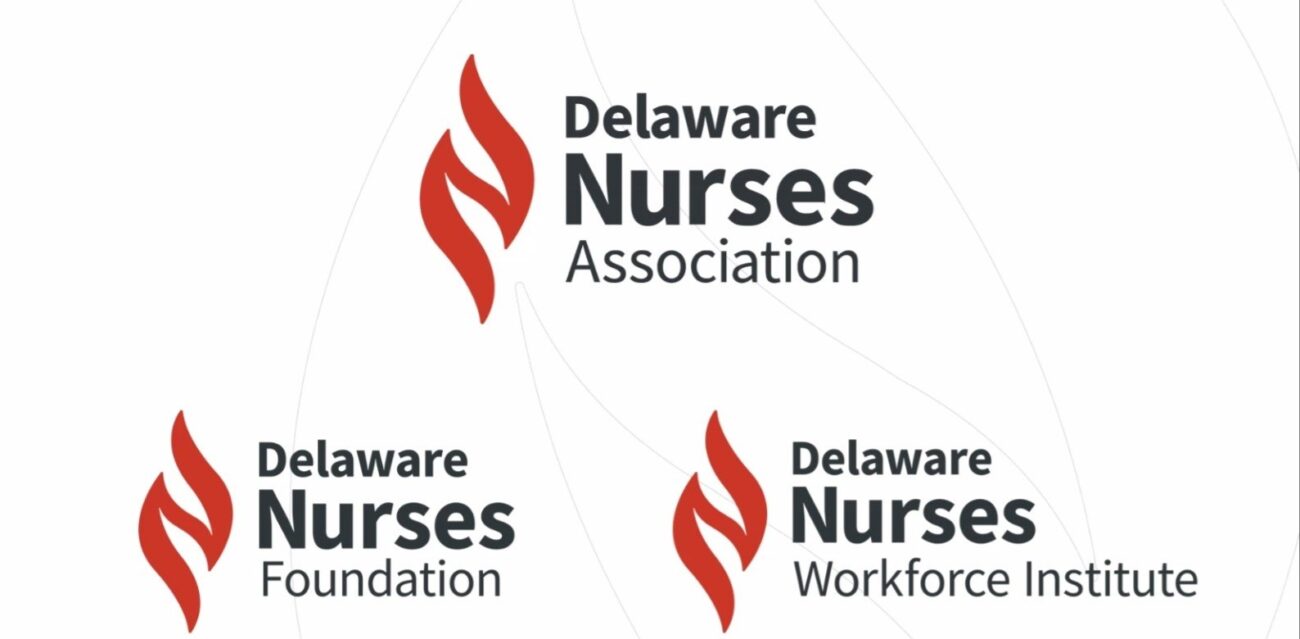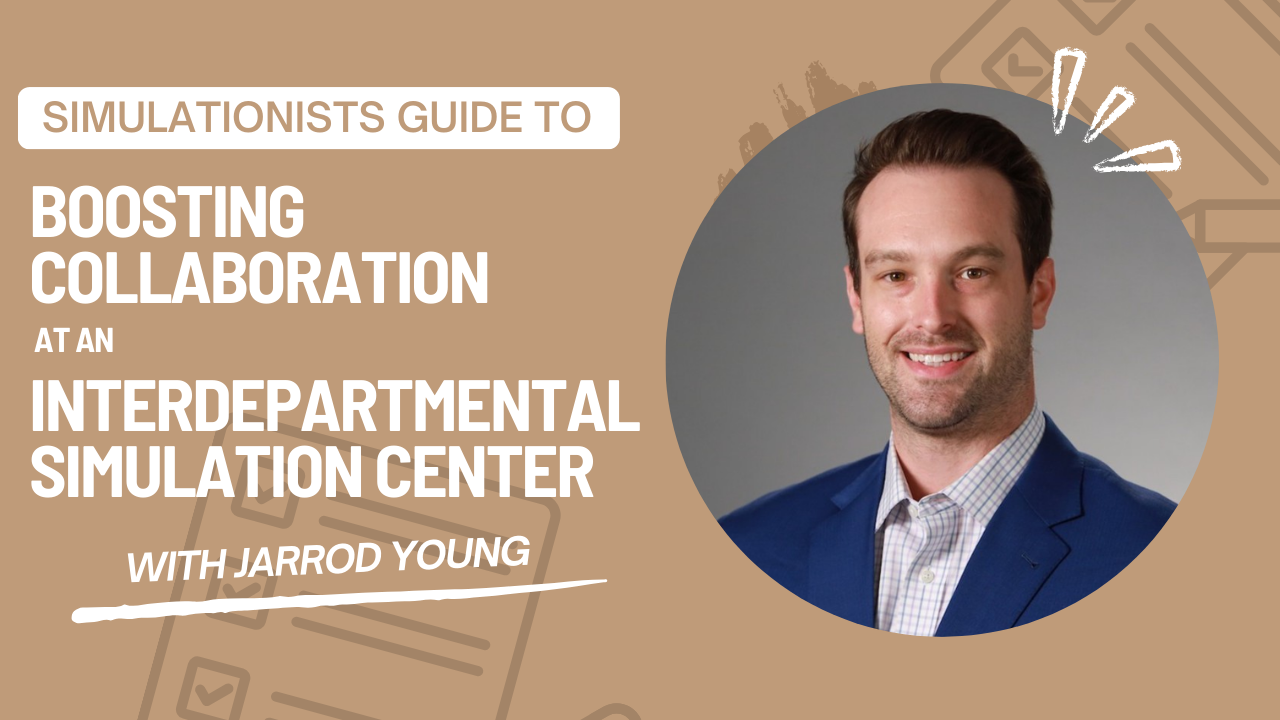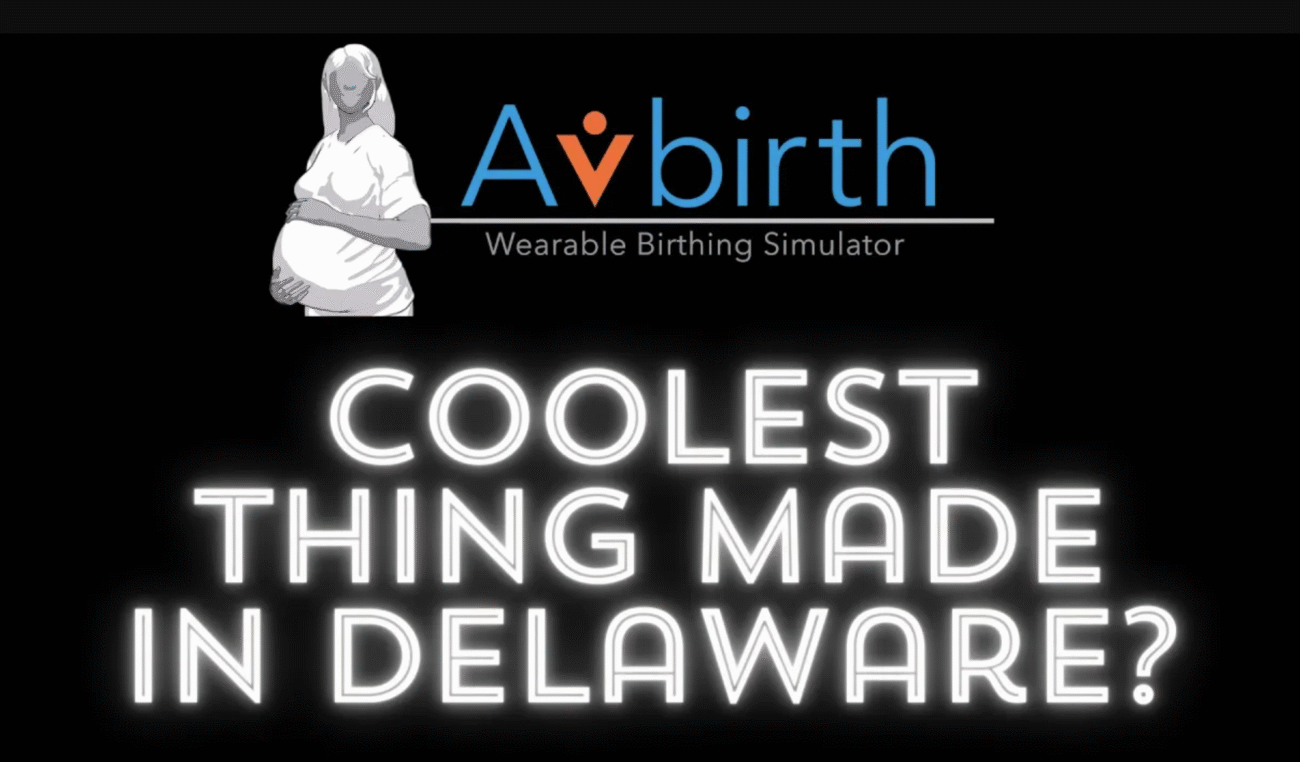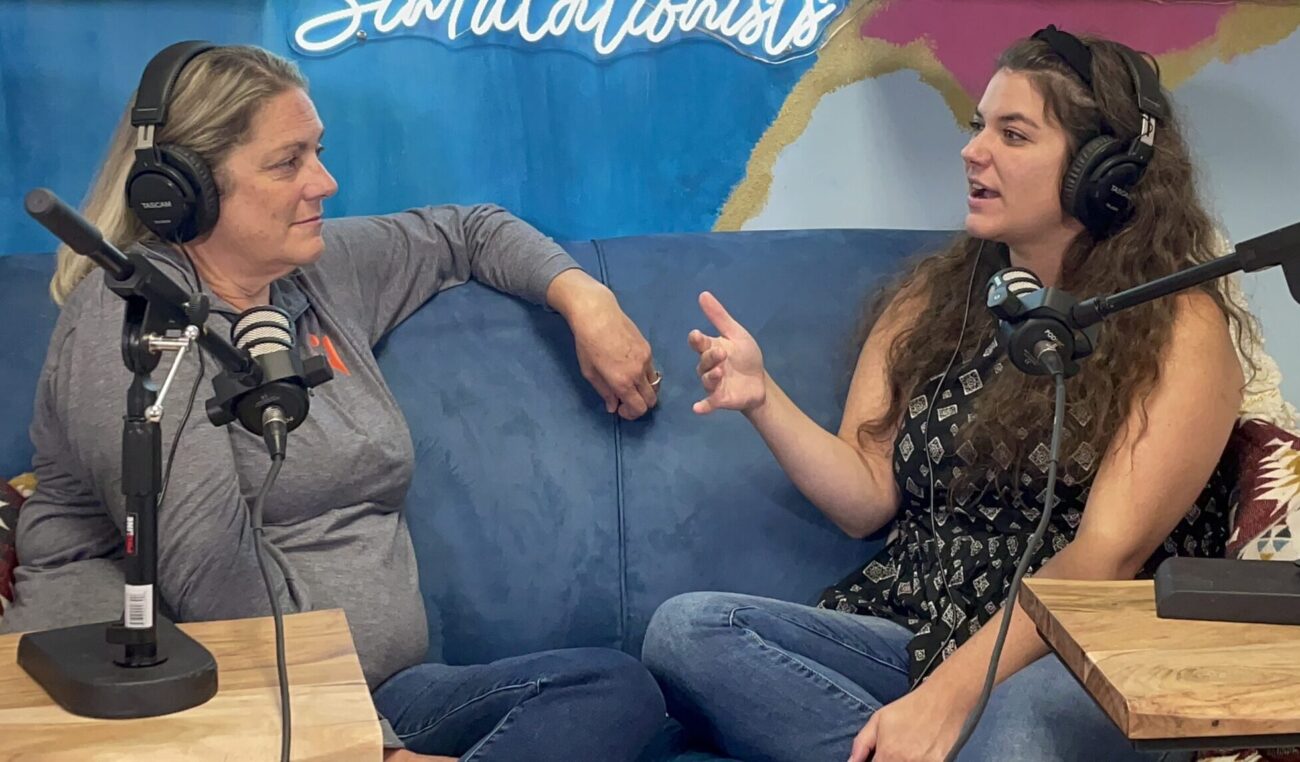Simulationist’s Guide to The Rise of Human Simulation in Healthcare

In this episode of Simulation Nation, hosts Megan Weldon and Amy Cowperthwait explored one of the most significant shifts happening in healthcare simulation today: the formal adoption of the term “human simulation” to describe any simulation experience involving a live person. From standardized patients (SPs) and simulated participants to role players and even real patients sharing their lived experience, the terminology has long been inconsistent—leading to confusion in literature, accreditation, and practice. Megan and Amy break down the history behind these terms, why the new umbrella term “human simulation” matters, and how it’s helping unify a rapidly evolving field.
What is Human Simulation?
The hosts dive deep into the implications of this terminology shift, particularly in light of new accreditation standards from the Society for Simulation in Healthcare (SSH). Megan explains how “human simulation” is now a selectable specialty under SSH’s updated “core plus one” model, allowing programs to be evaluated specifically on their live-person simulation practices. Amy, drawing on her years of experience as a simulation educator and CEO of Avkin, emphasizes how this formal recognition empowers simulation centers to advocate for the tools, training, and safety protocols needed to deliver high-quality, human-centered learning.
What is Human Simulation?
The hosts dive deep into the implications of this terminology shift, particularly in light of new accreditation standards from the Society for Simulation in Healthcare (SSH). Megan explains how “human simulation” is now a selectable specialty under SSH’s updated “core plus one” model, allowing programs to be evaluated specifically on their live-person simulation practices. Amy, drawing on her years of experience as a simulation educator and CEO of Avkin, emphasizes how this formal recognition empowers simulation centers to advocate for the tools, training, and safety protocols needed to deliver high-quality, human-centered learning.
Deliver High-Quality Human Simulation
Throughout the discussion, Megan and Amy pose critical questions:
- How do you define a simulation involving a real patient versus a trained actor?
- Should SPs be labeled differently depending on the modality—formative versus summative?
- What happens when terminology varies across disciplines or countries?
- They stress the importance of including SPs themselves in these conversations, noting that terms like “human simulator” may feel dehumanizing.
Their call to action is clear: if the industry wants to uphold standards, improve outcomes, and conduct meaningful research, it must first align its language.
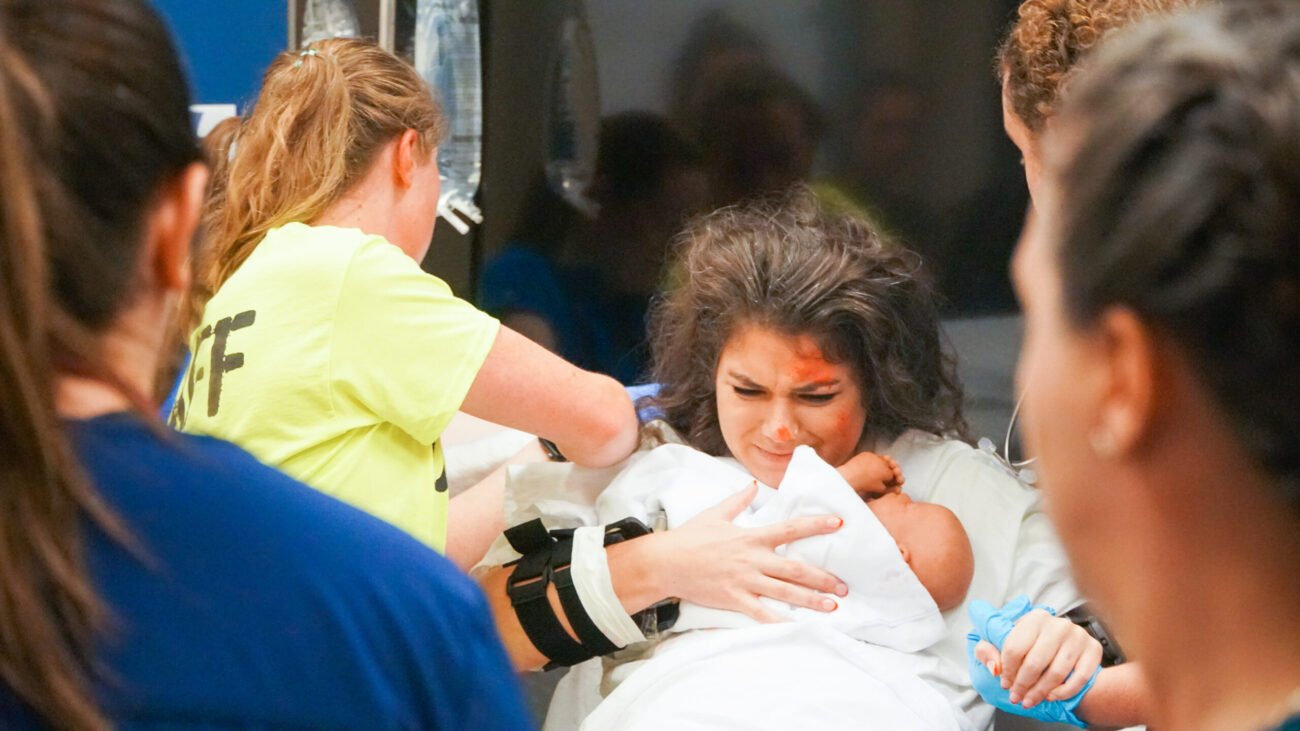
Finishing the episode, Megan and Amy celebrate what they see as a turning point. With both SSH and ASPE (Association of SP Educators) moving toward accreditation pathways for human simulation, simulationists finally have a common ground to stand on. The excitement in their voices is evident: this isn’t just a semantic update—it’s validation. It’s the beginning of a movement that recognizes the power of live, emotionally intelligent interaction in clinical training. And as Amy reminds us, doing “good sim” means more than using the latest tech—it means centering the human experience, every time.
If you enjoyed our guide to Human Simulation, check out more episodes of Simulation Nation below, and subscribe to our podcast and Youtube so you never miss an episode!
Full Transcript: Simulationist's Guide to The Rise of Human Simulation in Healthcare
Megan (00:00.034)
This episode of Simulation Nation is brought to you by Avkin, Inc., your one-stop shop for everything standardized patient and wearable simulator.
you
Megan (00:21.358)
you
Today we are going to be talking about a lot of the changes that are happening inside of the standardized patient world in simulation. So recently there’s been a lot of updates and a lot of things that are kind of shifting and moving in terms of terminology, accreditation, different things like that. So we’re going to be talking about what these definitions are, kind of giving a brief overview and then discussing where the different associations and accreditations and endorsements and all of that kind of live.
to give clear definitions of kind of what’s happening and also our takes on the situation.
I think it’s a really exciting time. You know, the fact that that that human simulation is the new term now, right? mean, Nate may even need to change our intro because we term standardized patient, but it seems like it’s getting kind of a broader term. Yeah. But I think that that is getting a lot of attention. Yeah. And it’s something that we’ve kind of been beating that drum for a very long time. And, you know, obviously not by ourselves, but we are really getting noticed by a lot of the associations that are involved in
healthcare simulation. again, exciting times for us.
Megan (01:32.11)
just want to share a little bit of my bugaboo here, my frustration. But I don’t feel like the SimTechs or the SimOperations, I feel like that was the only change that has happened in their terminology of like how we refer to the operations side of simulation. I feel like there was a big change where like when everyone started, it was SimTech and that was kind of all we had. And then it changed over, I don’t even know, maybe a few years ago, I’d say in recent years to operations. And so everyone kind of changed everything over.
rather than it just being like, that’s my SimTech, that’s our SimOps. And it entailed everything, because it wasn’t just technology, it was the whole operations behind the Simcenter. 100%.
is what they do. And a technician’s base salary is going to be very different than an average.
It’s very limiting to what they were doing. So 100%, it was a needed change, all for the change, love the change. I feel like in the world of human simulation and serious patient, it is like every other month I’m hearing of a new term or a new definition or a new opinion on how it should be talked about. And I don’t understand how there is so much deviation of what it is. And I don’t know.
Why were the two positions, like again, cause you think of operations, you think of like, let’s just say I’m going to use old terminology here, but like, standardized patient educator, right? You think of those two terms and it’s like, why is it that the two additional terms inside of SIM, and then you think of the term simulationists, that came about and has not fluxed, it’s facilitator, simulationists, nah, somewhere in there, right? But why is it in this world, there is so much
Megan (03:18.484)
opinion, I think that’s where it bothers me, where it’s like, it just depends on the flavor of the Simcenter, just depends on who’s the person behind it, of what they call it. And so we started with like, we started with standardized patient. I don’t, what did we even call them in the early days?
simulated participants because that’s what ASPE had put out.
But what about like early, early days of like our time in terms of like when you were first starting and you were just starting, like were they just actors?
I didn’t know the term was standardized patient until probably a year into things. we didn’t know we didn’t use that term standard. I think we did. But role players.
Did you just. OK, yeah, that’s what I mean. So like live role players are like early days. Well, we’re just starting to be like I’ve heard it as like especially if you go back to like early literature, it could be like live role players, actors, theater participant. Like you mean it was very vague because no one knew what to call them right then.
Amy (04:15.374)
But there’s also international, like the Lexicon internationally was simulated participant.
Well, so then, I feel like then we got into.
Well, I mean, it was actually in the literature before my time, but I just didn’t know it was. So just in deference to them. Standardized patients and simulated participants have been in the literature since about the 1960s.
Okay.
Megan (04:38.062)
Okay, and I feel like serinized patient though was very coined by the medical Tur or medical lens Yes, it was the medical lens then we had simulated participant we’ve had simulated people We’ve had simulated patient. We’ve had like the simulated family members. I’ve heard of people who just call them Acting support like things like that, but it’s like the terminology
That’s really where it kind of erupted.
Megan (05:07.68)
I just feel like it’s like so such an array of what it is that we’re calling them or talking about or whatever it is. And I don’t understand why in our world this seems to be such a challenge. But now they basically come out with, OK, everybody feels a little bit differently. There’s all these different nuanced in terms of definition or preference or whatever it may be. So basically the new term has been called
human simulation to be kind of that general umbrella over everything. So basically it’s like, no, no, no, we’re not gonna get into the nuance. We’re not gonna get into the detail of what any of it is, but human simulation is any time there’s a person inside of the simulation experience. So that can be role play, it can be peer to peer, it can be faculty and student, it can be a trained actor, it can be the full gamut, and it’s not discipline specific. Because I think that that’s where
They’re really trying to go with this, as oftentimes it is discipline specific of how they’re looking at it. And they’re trying to make it so we’re just covering everything. And we’re going to use a blanket statement. I believe it’s SSH. But I’m not 100 % sure who was first, because there’s SSH and there’s ASPE. But ASPE is literally the Association of Simulated Participant Educators.
Who is that we?
Amy (06:29.568)
Actually, they’ve changed it. It’s actually Association of SP Educators. they don’t define what SP stands for because it could be simulated participant. It could be standardized patient. now they have a
Oh my gosh.
Megan (06:37.496)
So they don’t defy.
Megan (06:44.59)
But now they have, that is human simulation. Human simulation. So again, I don’t know if it was ASPY and I don’t know if it was SSH. I don’t know who put out human simulation first. But the first time I started hearing about it regularly, because again, I will say at this point when people are coming out with a new term inside this little area, I don’t really give it a lot of clout until I start hearing it a lot.
because it’s one of those like, yeah, okay, here’s the newest term. Okay, here’s the newest thing. This does seem to now have legs where again, people are changing job titles, they’re changing, you know, email signatures, LinkedIn things, you know, all of that. So again, that’s great, love to see it. I don’t know who was the first though, but it did come out once this accreditation component was released. So inside of the term human simulation,
They’re now breaking it out into different veins. So basically what they’re saying is, and again, this is interpretation. I feel like this is kind of like when. Yeah, and I feel like everyone’s figuring it out, right? But I kind of feel like this is like, again, when Protestants all like read the Bible and we’re like, okay, this is my definition of it. And so then it’s kind of like, they had 65 different skews because like one person read this a little bit different than this person.
It’s hot off the presses too.
Megan (08:03.628)
That’s kind of how I feel with these definitions where now it’s kind of like, here’s this minor little thing that we’re going to call the, and this is a minor little change here. So what I can read from it, my interpretation. So again, this is no official opinion. This is just a Megan Weldon opinion here, but I just, again, I just, this is not representation of an association. This is just me. How I take it though, is that standardized patient they’re trying to say is much more of a
are an SP expert.
Megan (08:32.142)
Oski scripted summative simulation experience. Simulated patient is much more of a formative simulation experience. It doesn’t say that in the definition. Like the definition. The definitions that SSH has put out. So in the definition, it is not in the dictionaries. Okay. Some are in the dictionaries.
saying where, where are you looking?
Amy (08:55.416)
Thanks.
Megan (09:00.588)
And they refer to it. during the accreditation, inside of the SSH accreditation, some of it has a little asterisk and says, as referred to in the SSH dictionary. But not all of these definitions, I believe, are current.
You are getting this from the new hot off the presses accreditation standards that SSH has just posted on their website. Okay. let’s all be clear about where we’re from.
is where yes and again it’s like you said this could all change but from my understanding I was it doesn’t
I will say historically that has been what has been in the literature.
And I feel like that’s been kind of the…
Amy (09:36.578)
That’s what everybody wants us to believe.
I feel like it’s the like, yeah, it’s the like, maybe if you want, like, it’s kind of like when you’re trying to get your kid to like eat their vegetables, it’s like, they’re very suggestive. That’s how it feels, it’s very suggestive. So no one’s really willing to put their, line in the sand and be like, no, we’re calling this, that simulated patient is formative and we’re calling serinized patient summative. But it’s suggested, it’s insinuated, it’s leaned towards. So that’s where I’m kind of just gonna take that as what they want.
And what we’re going, you know, I mean, like that that is what the associations are saying. Like that’s our recommendation and that’s what we’re leaning towards. I did hear that recently from University of Tennessee, Knoxville, that they’re they said we call them simulated participants because we are formative. So we that’s why. And it was the first time I’ve ever heard someone in a presentation say we call them this because of a evaluation tool of the simulation. But so then my question would be.
Okay, so if you work at an IPE center and you have summative and OSCE style SIM and you also have formative SIM with nursing or EMT or whatever, are they called different things depending on what SIM they are? The different people, like this is our standardized patient pool, this is our simulated patient pool, I don’t know. Are they called standardized patient when they’re working at the med school but then they’re called simulated patient when they’re working at the nursing school? What about an IPE?
Different people.
Amy (11:02.198)
I don’t know.
Does it just depend on what that sim is? Is the sim formative? Is the sim summative? What if the sim summative for one group, formative for another group? Where do we go? I don’t know. I just think it’s a whole.
jazzed up about this today.
I did an article with Jill Sanko and two other authors, I can’t remember who they were, about the fact that there wasn’t enough consistency in the literature. And what that causes is if you are an educator and you are going to Ovid or wherever you’re going, PubMed to look up, every time you write an article you have these keywords that you put in. But if everybody’s writing different keywords, nobody can find the body of research that’s been
out there, right? There’s very, very, very little research on the best way to educate SPs and how to get SPs prepared for human simulation, for that human simulation, right? Yes, participants in human simulation, live role players, whatever you want to call them. But if there is a simulation that is done with a human simulation experience, as a human simulation experience,
Megan (11:58.296)
participants in human
Megan (12:03.256)
Follow.
Amy (12:13.806)
We can gather 10 or maybe 15 articles, but there might be a whole lot more if we just Googled. I can remember doing stuff with standardized patient and then learned that in Europe and Australia and maybe even in Asia, they call them simulated participants. So then when I Googled that or when I pubmed the time, pubmed or Ovid, that just opened up a whole nother.
And that’s, I think that that’s the struggle is that it also, I feel like part of the issue is that there’s a lot of times where it’s like, can’t get good data points. We can’t get good research because everyone keeps being like, well, I do it slightly different. So it doesn’t apply to me or I do it this way. doesn’t like, I feel like no one’s willing to be like, yes, we can. There’s so much nuance, right? Like, again, let’s take it back to the Sim Ops. There’s so much nuance with Sim Ops. If you work at a community college, a university, a huge Sim Center,
that’s independent, IPE center, a nursing school. There is gonna be nuance and difference all throughout that, right? But we can all agree that best practice or all of these different things applies to SimOps in a fairly wide sweeping range, right? Even though there’s so much nuance. I’m confused or I don’t necessarily understand why inside of…
standardized patients, SPs, there is so much of this like, well, that’s how they do it over there, but I do it this way. And so now I’m in a different field. And I do think it’s hard to because a lot of times what I’m hearing more frequently now is people are trying to term bringing in patients who actually are patients. So let’s just say they are someone who is elderly. Exactly.
and history of cardiac disease.
Megan (14:00.384)
They want to bring them in and they’re like, no, no, no, you’re not playing a role. You’re not playing a character. You’re just you. And we’re going to have you play you. And they’re calling that a standardized patient. And that gets also confusing because it’s like, well, that’s not going to be the same thing. that situation, there’s a lot of things from Aspie, Sarah’s best practice that’s not going to overlap with that as the concept of them playing themselves. Right. Like there is a lot of stuff with like
case development and like standardization and all of these different things that aren’t necessarily going to apply in that realm, that I think again, it makes it challenging because there’s so much like, well, this nuance and that nuance and this nuance.
Well, right. And if you asked Eber and Nestle, their term is expert patients. That’s the term for someone like, I know UMass Boston has people that are formerly drug addicted come in and do a simulation with their learners just for them to, again, see social determinants health and people, hearing from people who have been.
Okay.
Megan (15:09.506)
See, that’s where I struggle though, or I guess it’s not clearly defined is, is that a simulation though? Because if they’re going in and it’s the person presenting as themselves, they’re not going, they’re going through like maybe intake, you know what mean? Like they’re not going through the same thing. And a lot of the objectives are based around it just being like.
you’re going to just interact with this person and gain empathy and understanding, but without really like, you’re going to assess lung sounds, you’re going to assess airway of the patient. You mean like when it’s less objectives that are like, let’s walk them through the flow of
like you’re thinking about critical thinking and you know, you know, like basically like identifying cues, performing interventions and actually looking at, you reevaluating whether those those interventions worked, right? So it’s a little different, right? But I think but I think that the where it where it fits in the simulation center is it is an active learning experience. And so I think that it is it may not necessarily be, you know, if you looked at the exact term or the exact
Yeah, like I’ve seen…
Megan (16:10.83)
Okay.
Amy (16:18.572)
definition of simulation, I think it is more working on
developing empathy, understanding how social determinants of health impact the epidemic of addiction and how that impacts people’s lives. And I think that it’s always kind of like, well, they have an addiction, they have a problem, but that person could have been a mom who got in a car accident and had back in. Just understanding the humanity behind these people, right? But I think that for the most part,
Yeah.
Amy (16:52.886)
even if it is somebody with a cardiac disease so they can hear abnormal, you know, cardiac sounds, you know, the, it just, the definition of simulation would have to definitely be looked at to say whether it fits.
I see it as very similar to like, because I’ve seen a lot too, where people are using, you know, empathy trainers for like, there’s things that they can wear that gives them empathy for what it’s like when they’re older. Or like, again, the hearing voices simulation and things like that. And I always see that as kind of a different skew. Like it’s kind of like other, you know what I mean? like, you’re looking at that, that’s, that fits over in this other category. That’s kind of how I’ve always seen it. But again, I just go back to the fact that I think it’s so
learning experience.
Megan (17:34.262)
hard to create research bodies of literature all of these things when we are so divided. Now I that’s the
That was exactly what my article with it with Joe and everybody else said is like we have got to come together on this.
And I think that that is
I think that is the goal with human simulation because I think what they’re saying is it’s like we can all agree on human simulation is the big giant umbrella will at least then we can start collecting and then you determine is that Article applicable or is it not right? And so then I think that the concept of it being like, okay Let’s just all agree that this is gonna be the larger relative. So in terms of Progress, I feel like we’ve taken one step closer to be like, okay, we’ve got one overarching term
that at least I know ASPy and SSH are agreeing on. I don’t know about an axle. Hopefully they can get on board, but at least they can agree and say, okay, we’re gonna call it human simulation, which hopefully will then equate to getting that body of research and things along those lines moving. And I kind of feel like at the end, all of the other nuanced definitions inside of that will work its way out. Like it’s kind of just like.
Megan (18:47.223)
It’s a later, it’s a tomorrow situation.
The most exciting thing from all of this is that two of the associations that are part of the healthcare simulation world have released that they are doing some type of certification with people that are doing human simulation. So the ASPE standards of best practice came out in 2017 and there really hasn’t been a whole lot since then about the idea of SPs or human simulation. And so to hear that two of these associations are
coming out with this is really exciting because
not certification, right? Because certification would fall under Chessy, Chessier.
Well, I would I it is accreditation, but what I’m saying is like they have they use different slightly different verbiage So I don’t want to fall into that but there is date there’s basically an assessment that is done of a sim center that is doing simulation with SPs or human simulation, right and live How did you say the right because we don’t want to use the term human simulators? We feel that that is really an inappropriate way to refer to a
Megan (19:52.83)
Participant participants in human so I Megan Walden, that’s what I’m turning. I don’t know. I don’t I don’t want to add this more I just don’t want to add this more and more confusion right that is what I’m calling it but
Participants in human simulation.
quoted one love that she got caught
Amy (20:09.006)
Again, the idea that there are people that are looking at this that are very credible in the industry and now saying, let’s help you.
What I really appreciate too is that they are saying, hey, there is a difference for human simulation than any other modality. Exactly. They’re not saying, hey, we need to individualize this. But they’re saying, hey, when you’re including any type of live person inside of simulation, whether that be faculty, role play, serious patients, whatever it is, simulated participant, it’s the fact that
Anytime that’s gonna happen.
you need to make sure you’re doing it right because it’s another live person. We’ve always said this, that it’s like when you’re doing SIM and now you have another live person, that psychological safety is no longer just for the learner. There’s also psychological safety for and physical safety for the SP that have to be factored in. You can’t just ignore that. It’s another factor. You’ve agreed to that when you agreed to have that live person. So I do think that now that they’re saying, OK, there’s an additional component. So what we know
and physical safety.
Megan (21:18.612)
SSH did just release their new accreditation standards. So that is out now and that is live that is hot off the press new coming out. I do to reference it just in case. So we do have that.
It’s got it over here.
Megan (21:34.858)
And we know that there are basically they’re going through new definitions and then there’s also different domains that are basically saying, hey, this is what we’re checking. So what we know is that we’ve all, well, I shouldn’t say we’ve all, there is SSH’s base accreditation, right? So that has been out, their core accreditation that has been out for a little while now, a few years.
So people are going through that and again they have accreditors on their staff or on their on their team. They’re not staff members but they’re on their team and so we just talked to Jared he was an accreditor for a while and basically
Well, so anybody that’s on their accreditation committee is versed in doing this.
Thank you for correcting that. Yes. So we do know that they have them, they’re going out and then now what they’re adding is the base and then the selection of four different areas where you can basically specialize in is kind of my. Okay.
It’s always been core plus one, but core plus one meant you could do core plus assessment, core plus teaching and teaching and evaluation, or core plus research. But now it could be core plus human simulation. So you can select that one as your additional piece.
Megan (22:46.498)
And so they’re now going in and going to look at your program and basically your human simulation program to evaluate if it’s hitting on these standards going through and saying like, are you doing these different pieces and components?
And as a person who’s going through the accreditation process, if you select that, then you are writing, you know, you’re presenting to the accrediting creditors how you meet those standards. Right. And then they’re just like, everybody’s on the same page. This is what we’re looking at. This is what we’ve done. They’re taking a look at what you’ve done. You know, when we went through the accreditation process, obviously this wasn’t available and we went through core plus teaching and evaluation, but they did as the SP, the director of SP education.
they did pull me aside and say, hey, tell me about what’s going on. They did ask to speak to a few of our SPs to make sure, even though there wasn’t any standards on it because we were doing that, they wanted to see our policy and procedure manual, right? So there still was some look at it, but this is just formalizing the fact that.
and giving you something to work off of, which I think is helpful to say this is what we’re looking at. I also think that it’s going to give us a lot of good data points to see who’s selecting this plus one and how is that modality growing inside of simulation. So far, that’s what I’m excited about is I think that it is a really exciting time because again, I am obviously all for live people inside of simulation, but I love this because now it’s like, no, we’re going to do good sim. Like this isn’t just going to be like, okay, grab someone from the hallway and bring them in and
Yeah, it’s pretty popular.
Megan (24:20.976)
let’s have them a part of it. It’s like, no, no, no, you need to have your due diligence. You need to have your training. You need to emphasize psychological safety. So I think what we’re going to see in terms of data points and things like that back to know, you know, this is what people are doing. This is how it’s growing. And this is what we’re seeing in the industry. I think that’s also going to be a very helpful point for research to know what that looks like. right.
And I also say, if you are accredited, right, as an educator who, you know, that was something that we would work with, is to say that, like, you do have to be considerate of SP safety, right? But we didn’t have anything to point to. But once you become accredited or are going through accreditation, you have that wherewithal to be able to say, are going through accreditation on this. These are the standards that we must follow. Right? So it’s not, really, for people who haven’t gone through accreditation, I just hope you
hear this because it’s such an important piece is that you now get to advocate for the things that you need in your sim center to do good sim. And that and that to me who doesn’t want to go through accreditation if you think about it from health care who doesn’t want to follow best standards. Right. But if your dean is willing to pony up the investment in resources to write to go through that accreditation process plus pay for it. They they’re they are going to support you.
in the things that you need in order to do good stuff. And I think that that is a really big factor is that the accreditation committee is there to yes, check you, but they’re more so there to advocate for you and to be that kind of like, here’s the stake in the ground. And we need to stick to these standards. And so even when they’re not there on scene, no, no, no, we’ve been accredited and these are the standards that we are expected to follow, which I think.
Peace.
Megan (26:08.136)
miles.
to really, again, putting the stake in the ground for human simulation and making it so much more valuable for the learner.
Yeah, I think that a lot of that Yeah, and I think that a lot of that does go back to Reframing how you’re looking at it versus it’s like okay. I’m going in to be graded or you know, whatever that is
I said until I got there and they’re like, how can we help you? And I’m like, Are you here to help? Rather than like you’re under an examination. It’s really like, what can we help? What are your needs? What are the things that are going to help you do better? Because obviously, as someone who was fully invested in the process, I’m going to be able to see where there’s holes, right? So advocating for those things. that just, again, it gives you that opportunity to point back to the standards. These are the standards. This is what we are accrediting.
Yeah.
Amy (27:01.072)
And again, people, because every healthcare institution that does education and even every healthcare institution has to be accredited, right? You have to go through an outside look at what you’re doing. They understand that, yes, you need to hold to those standards even when the accreditors are.
in the house. Well, and I think that that’s the part too, where it’s like if you start getting challenges like increased enrollment and budget cuts and you know, like all these different things, you then have the backing of the standards to say, OK, but this is now what I need then to uphold the standards that I already have. Right. And so, again, I think that the investment in it is not just for a grade or for like the final check mark, but it is also for you to be able to advocate and improve. So I just want to go through what the different domains are here. So we have activities with human
simulation.
Let’s just say very specifically SSH has listed this and we’ve said that a few times ASPE does not really have on their website What their standards are that you’re they’re looking for it if you apply I’m sure you’ll get that information Yeah, so we can only speak now to what SSH has on theirs again ASPE is the ones that have released the standards of best practice in 2017 so I’m sure that it ties back to that I know that with this accreditation it does say that they look that SSH is looking also at the ASPE standards of best practice
that have been.
Megan (28:20.206)
Just put anything for accreditation on ASPI on a shelf right now. We’re not talking about them. We’re only talking about SSH for right now. So for inside of SSH’s accreditation inside of the human simulation plus one section, it has human simulation activities, human simulation education design.
because we can only speak to the fact that they haven’t.
Megan (28:41.282)
qualified human simulation educators, human simulation training, human simulation evaluation and improvement. So generally it does tie back to what we’re looking at with the standards from ASPE, but it does give bullet points then underneath of it to look at it. I would encourage anyone who is using live people in simulation in any capacity to review these accreditation domains to kind of see where you are. I think that that’s helpful to see like, okay,
What are we doing? Even if we’re not going for accreditation, let’s just review it and look at it to see, yes, this is where we’re filling this need. This is where we’re filling this need. I do think that it’s helpful to do kind of a self-evaluation to look at that. Yeah, because it does give us a good measuring tool, right? It gives us a good ability to say, okay, this is what SSH is saying. Let’s evaluate it.
Yeah, and I will say that, so let’s say you’ve already been through the core plus teaching and evaluation. If you want to go just through the human simulation piece of it, you can go back and get that single piece. Or research or assessment, any of them. So you can go back through this piece of it. But I also want to say that I do think when standards are provided, it gives you the idea that, OK, here’s.
you know, here’s where the line is, right? And we want to try to get above the line. I remember when the ASPE released their first standards of best practice and we were so excited, right? We ran to it right away and looked at it and by and large, we had pretty much implemented almost everything in there. There was two things.
One was we didn’t have a code word for if the SP felt unsafe. And I remember that that was something that we had to start. We obviously had pretty good communication, but in the middle of a simulation if something were to happen. And then the second one was that we didn’t do a pilot simulation. And I don’t know why, because health care standards of best practice had this on there as well. I don’t know if I just don’t sleep when that happens.
Megan (30:38.638)
ASPI was called a dry run and Naxal called it a pilot, but it was the same concept of doing a run through before the simulation happened. So basically in the summer, run through the scenario, find the holes, find the pitfalls, and then you’ll be better prepared when you do
So this isn’t the dress rehearsal. The dress rehearsal is something you do like a week before the sim or somewhere in there and you’re practicing that sim. But that’s for like a fully vetted sim that you’ve probably been doing. I will say for me, it took three times, three semesters of running the simulation till I felt as though we had had it fully vetted, right? Where we had everything that we needed. So you don’t make any changes in the middle of the semester, but at the end of the semester we would always take notes and make any changes.
obviously less notes came. But if you do this dry run or this prior to, you you’ve got the simulation written, you have experienced SP that comes in and, you know, takes a look at the character development, we run through the simulation, that’s where you identify where…
learners are going to be messed up. And what we would do is typically try to get learners that were a semester ahead or a year ahead of the students that we were going to put through the program because they’d already had the learning content and things along those lines. And we found, once we started doing that, we really found some simulations that we needed to make adjustments and changes to before the simulation started. So it led to better outcomes in the first semester.
But even just from an operation standpoint, it’d be like, where’s the blood pressure cuff? Where’s the pulse ox? we forgot that we actually are going to need that wristband or whatever. It was just even the fact of just logistically giving everything together. So rather than on the first day of the sim, you’re running around frantic. It was like, no, we know that we need that, which again.
Speaker 1 (32:31.394)
Like of those like, don’t know, the screen.
Good idea. Don’t know why we didn’t think of that, but good idea. So right now, SSH, with their accreditation, they have put through one cohort, which is three different schools. They are in their second pilot right now. And then I believe after the second pilot is when they’re planning on doing their full release of, again, of like opening it up more to the masses. But right now, they have that second pilot going through. And ASPE right now.
like a simulation where they ran through the first part they found out what they needed to make changes or adjust and then they’re running through their second one.
And so then now ASPE has released something very similar. It’s one word difference. I don’t want to go through and say it because I know I’m going to butcher it here. But it’s very similar. It’s just ASPE’s human simulation accreditation and SSH’s human simulation accreditation.
Accreditation in human simulation is ASPYs and SSHs, human simulation accreditation.
Speaker 1 (33:30.124)
Okay, I’ll take your offer.
So very similar, but ASPE is releasing their first decisions. Yeah, well, like decisions on the application. So basically they’ve had open application that closed April or no, sorry, it closed in March. And then now they are releasing the decision to the participants, to the applicants on April 30th. So that should be coming out very soon.
don’t think it’s just something like.
Amy (34:00.226)
know if they’ve run through any pilot programs before this, but this is the
I believe this is their first pilot. This is their first release. This is their first people. So this is the first time this is going through. So in terms of the difference, we don’t really know cost-wise what this is going to look like from ASPE side of things. They have never done an accreditation before, so things are a little more gray of how this is all going to shake out and how the two are going to speak to each other. Again, we can clearly understand because SSH has already had their base accreditation with the three options.
So it’s a little easier to understand that this is just now an additional offering with the three that they’ve previously had. So it’s easier to understand how this is gonna all shake down and it’s easier to understand price point. But when it comes to SSH, this is their first time doing any type of accreditation. So it’s a little harder to understand. Okay.
my gosh.
When ASPE put out their accreditation, it’s a little harder to understand how that’s going to flow and what that process is actually going to look like. So with that, we’re kind of still waiting to see what this results going to look like, how they’re going to be presenting this. I’m sure it’s going to come up at their conference in June. But basically, we’re kind of waiting to see how this is going to be unveiled.
Amy (35:13.09)
I mean, I think it was first presented last year as like, hey, but I wasn’t there. So I don’t know. Yeah. What was presented.
We’re doing it. opening it. Yeah.
Yeah, and so then I think this year is kind of gonna be like, okay, these were the Accepted applicants. We’re now gonna open it up again, know But I think we’ll kind of start to see how this is gonna work and I’m curious to see how the two are gonna blend like I’m not really sure how these two things are going like how are they gonna like what’s gonna be their differentiators what’s gonna be? This is SSH’s yeah
Again, think it was different.
I mean, again, from my perspective, being a part of both associations, I think that if people have already gone through the SSH accreditation, they’re probably going to stick to the SSH accreditation. But if it’s a med school and they’re very involved in ASPE, they’re going to work through that. I don’t think people are going to need both. I think they’re going to just make a decision about which one works best for them.
Megan (36:07.82)
Yeah, and I do think that it’s harder with, you know, I know ASPE is not technically medical, but they definitely lean more towards that medical side of simulation. And I think SSH leans much more to an interprofessional side and like approach to it. So I do wonder how that’s going to kind of play out in terms of what that looks like.
will say historically, mean, ASPE was started by medical, I mean, like they had to go through the OSCEs. they, it was medical, you know, GME educators, and they got together to make sure that, you know, they had…
collaboration, I guess, amongst the SPs and to help elevate the SP experiences for their med students. So that’s really how it got started. Again, they still meet the needs of other disciplines, but it’s predominantly, that’s the roots. But SSH, it was also medical, its roots. I think it’s definitely sprung out a bit more, but it was historically that way, way back in the day.
you
I do think that it’s, for me though, what I look at a lot in terms of like even the past five years and I understand that like in healthcare sim, the last five years is like a good chunk of their history, right? You know, or the growth history of it all. But I do look at who’s on the board. And I think that that does play a big part into where the association is leaning towards. When you have a board of people who are all working in medical simulation, I think you’re gonna lean towards that. I think that it’s easier to understand the same way that I worked primarily in
Megan (37:40.656)
That’s going to be my natural lean as I’m going to lean more towards that discipline because that’s what I know the most, right? It’s where I naturally operated. So I do think that in terms of making sure there’s diversification on the board, I think that’s important. I think that’s a really important piece that as they’re looking at becoming, know, fulfilling the needs of all disciplines, you need to also have that say. That’s the other thing I want to push as well is on these decisions that are getting made about human simulation, please consider
having someone who has experience of actually being a standardized patient involved in these different initiatives. Because I do think that there is a big difference from standardized patient educators who have never been in the bed. Like that’s how I would always call it. It’s like, you been in the bed? When’s the last time you were actually going through simulation? Because it’s a completely different viewpoint than as the educator. As the educator, it is completely different. And I will say that there’s few and far between of people who have stayed in the industry.
as a standardized patient and who has done that role and identifies as that like would call themselves a standardized patient being involved or ask questions about what’s coming up with human simulation and things along those lines. I do think that’s where we end up in that tricky territory of terms like human simulator that are not necessarily viewed positively by someone who is a standardized patient. It doesn’t feel good to be called a human simulator because again, it feels.
guilty humanizing, feels like you’re a tool. And I think that there’s no harm intended with that, but nobody’s asking. It’s the same thing with the earpieces. I hear people using earpieces all the time. Nobody is going to the serous patient saying, let’s go through this, let’s chat about this. It’s like, no, I think this is the better thing, let’s put that out. And I just implore these associations to have…
people who’ve done this for a while, who have some experience, who really love it and really understand it, having their vote or having their say in what’s going on. Because I do think that that’s also very important that a lot of times it’s easy to make decisions for them or based just on the educator role, but there’s also a deeper level from the standardized patient role. So I just think that that’s something I would love for them to consider as they continue to move.
Amy (39:53.642)
So Megan, maybe you should start a nonprofit association for standardized patients.
with my nine month old and my three year old at home. There is nothing I would love more than my full time job plus the podcast plus everything else that now I’m gonna start.
If anybody, anybody that’s listening has the desire to start an association, we’ve long thought that SPs need their own advocacy group. For sure. Megan can’t do it, but.
Yes.
will volunteer a little bit about as many hours as I have in the day to assist with it. I cannot do it myself. But yeah, I think that this is all really exciting stuff that’s coming out. And again, I’m really curious to see kind of how, I feel like a lot of it is like, you could almost see like, I don’t know, like the different worlds colliding. It’s kind like, I don’t know how that’s going to go together. I wonder how those pieces are going to fit. Like, so I think there is a lot of questions right now as things are just kind of starting and building up.
Megan (40:49.472)
But it’s exciting things and it’s the part that just makes my heart so happy is I just feel like again It’s the validation that people want to do good simulation They want to do good human simulation and now there’s actually going to be reference points I get to me It’s the same thing as when the standards first came out of it being like, okay, we’re making a step. We’re making some progress We’re getting to that next level and I kind of see this as the same thing as it’s very Validating that there is the distinction that hey doing manicure
doing VR Sim, that’s one thing. Doing human simulation is another thing. And we’re going to make sure that this is clear and make sure that there’s standards. And I just think it’s really exciting that there’s going to be that representation inside of these huge associations for saying, these are the baselines and like what we talked about earlier, here’s how you advocate for it. And again, we’re making sure that…
it’s being done well to represent that industry well. And that’s what really just like, again, it makes me very excited about what’s to come. And again, I think we’re seeing this.
in the infancy stages, but it’s like, what’s the next three years gonna look like? And I think that there’s so much talk right now of AI and concern about what that’s gonna do for jobs and how that’s gonna fit into simulation. I really do believe there’s room for all of it. I don’t think that it needs to be like, oh, AI is gonna consume simulation. I don’t think that human simulation is gonna consume simulation. don’t think mannequins will. There’s place for everybody. It’s just figuring out how all these dynamics are gonna work in one center.
our last interview with Jared, if you guys haven’t listened to it, I encourage you to go back and listen to it. But I think that that’s what’s encouraging too, is it’s like, he was talking about, it’s like the dance of all the disciplines and how all these things work together. Same thing with the modalities. What’s the dance of how all of these things are gonna work together? And I think that it’s just exciting to see both of these new emerging thoughts coming up without one necessarily needing to beat the other one. It’s how do they continue to grow and where’s the space that you’re using them in the right form and fashion based
Megan (42:54.18)
off of honestly going back to the learning objectives. What makes sense for that? And with AI, how can it assist you not take over? And I think that’s the big balance that everyone’s trying to figure out right now. Yeah, I would agree.
I will say that when I took my Chessy exam, when they asked which modality was best, that standardized patients was checked way more than any of the other ones. So, I mean, again, I will definitely grant that I am biased, but as an educator that had come right from the clinical arena, I saw what…
Not biased.
Megan (43:23.566)
Arena.
I was doing and I felt as though I was only giving the learners half. so by including humans in simulation, it made such a big difference for them as far as their outcomes and their development and their confidence and all of those things. So I will forever be an advocate of it. But I also know that, know, resources are limited. know, sometimes people cannot get a lot of diverse populations in the areas that they are.
So you have to look at the resources you have. You have to look at what modality is best, your level of learner, the objectives, and all those different things to maximize the learner’s education. Asking the employers, like if you guys, for those of you that are listening that work in universities or community colleges, I am sure that your leadership does surveys of the employers that your graduates go to.
Find out what the employer’s feedback is about your learners. What are the things that you could make improvements on? What are the things that you could make better? Like, at the end of the day, that’s going to help inform what you need to do because they’re getting a look at what the output is from your program.
Well, I also think too, viewing it that the student is also a customer of your simulations. Yeah. So getting feedback from the students of what did they find valuable? Having a sit down with senior level students and going through the simulation curriculum and talking about how did this impact it? What was your favorite? How did this? What was your learning outcomes? I think even that’s really helpful and it’s a really easy base start. And I think that sometimes people are scared because they’re worried about what feedback they’re going to get. But I think sometimes they don’t realize like you’re going to hear so many great stories.
Megan (45:00.656)
stories about what happened and that’s gonna be your moment. And so I say that a lot in my consulting where it’s like, don’t be afraid to find out what it is, because you’re gonna hear the bad, but you’re also gonna hear the good. that’s gonna ask you a lot what’s the good, right? And it’s like, you’re gonna get a lot of momentum from hearing about these success stories that you’ve had. I do wanna mention that just because we talked about it, but ASPE did put out an infographic, or no, SSH, I’m so sorry. SSH put out an infographic, I wanna say a year ago now, but it was a wheel and it had basically
what was the learning outcomes and then what’s the appropriate modality. And that is inside of there where you can reference that. I do think it’s a good base point of being able when you’re starting out or trying to learn.
Yeah, they did.
Megan (45:43.444)
Really great infographic to kind of go back to. I encourage people to put it kind of their policy and procedure. And when they’re doing simulation design to include it in there because it is a helpful reference tool. It is fairly basic. Again, it’s not necessarily super nuanced, but for a basic tool of just being able to reference it, it’s helpful and it helps you know what technologies. Wearable simulators are not included, but just know that they are around that you can use wearable simulators with.
you do have. Well, it supports the decisions we made.
Amy (46:10.902)
still going to beat that drum.
human participants that they can wear and you can merge the best of both worlds between the two. So just know that. But I think that that’s helpful in terms of reviewing modalities. So thank you guys so much for joining us on this episode of Simulation Nation. We hope that this offered some insight into some of the changes that are coming out and emerging in recent findings and things that are happening. just hot off the press. I think that again, like six months from now, we’re gonna have to revisit this and kind of go back because think there’s gonna be some changes.
and new things coming out. So stick around and we’ll be back next episode.
